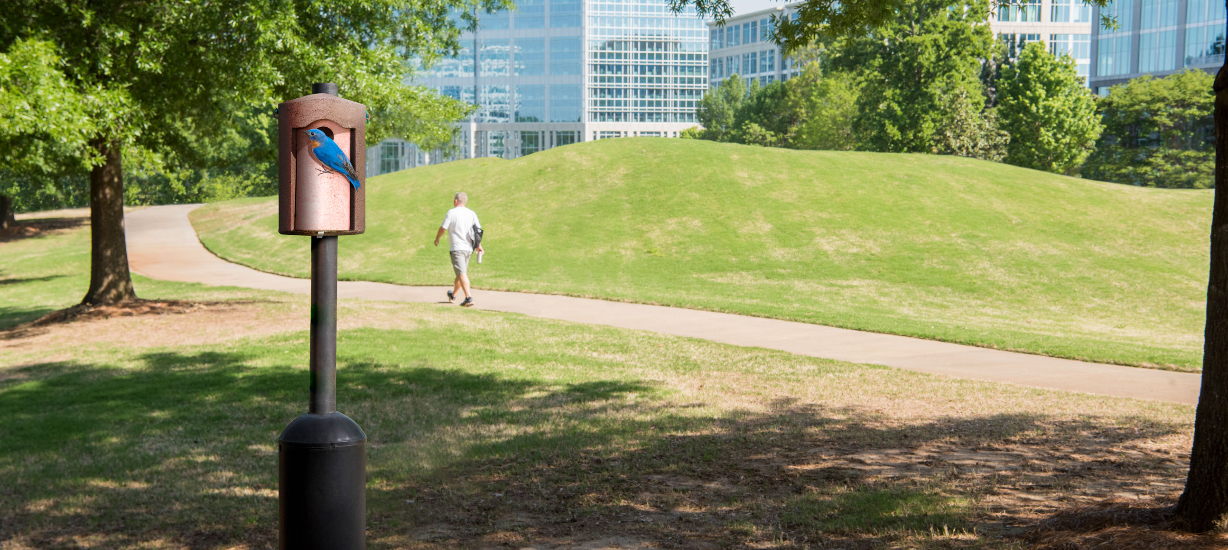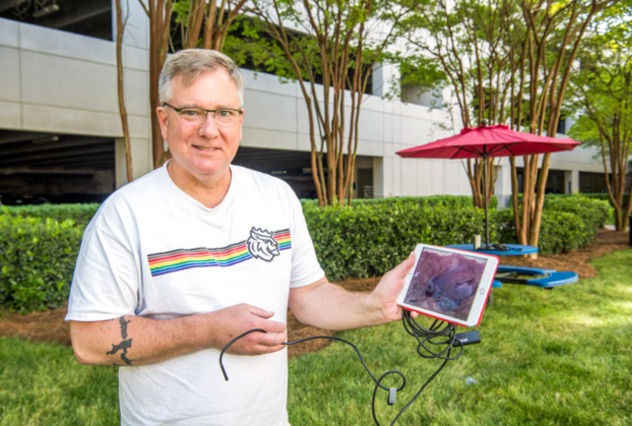
The Nest Best Thing
Project leaders install bird boxes, check activity on the Ballantyne® campus
By Amy Rogers | Photos by Raymond J Photography
A flock of new families is moving into the area, and you probably pass by them every day without noticing. They’re eastern bluebirds!
It’s the busiest time of year for Sialia sialis. They’re nest-building, laying eggs, raising young and defending their families from predators. They’re just steps away, too, throughout the Ballantyne campus.
These small, colorful songbirds are delightful to watch but play a big role in the larger story: helping us understand how we coexist with our natural environment.
Bluebirds are cavity nesters. You won’t see their nests exposed on tree branches. Instead, they seek out tree crevices and other protected spots. They prefer to live in open areas where they can perch in trees and use their superb visual skills to spot and capture the insects that make up their diet.
The large, open green spaces on the Ballantyne campus are ideal. Therefore, Northwood Office relocated or installed 75 eastern bluebird nesting boxes all around the Ballantyne campus in 2021 and 2022 to provide a safe nesting environment. A Queens University professor and his students regularly monitor the bluebird boxes and report their findings.

We recently followed the specialist on his rounds. Jeffrey Thomas, Ph.D., is a professor of biology at Queens University. His work focuses on animal behavior and avian communication. “We walk through every single nest box and use a little fiber-optic camera to enter the box and see whether or not it’s occupied,” he says.
Bluebird parenting is intense. A mama bird with a clutch of eggs appears grumpy at the brief intrusion, but Thomas works carefully and quickly. A male and female pair can raise two or even three broods of babies during a single season (March through August). Thomas has spent enough time observing the population to identify their behavior patterns and recognize those who return to specific boxes.
With their namesake blue coloring above and rusty-looking feathers below, males are brighter than females. This distinction helps males attract mates and allows females to stay inconspicuous during nesting. Both will work to chase off interlopers and predators. House wrens and house sparrows will sometimes claim nests for themselves. Non-native European starlings are especially troublesome, which is why bird box holes are kept small.


